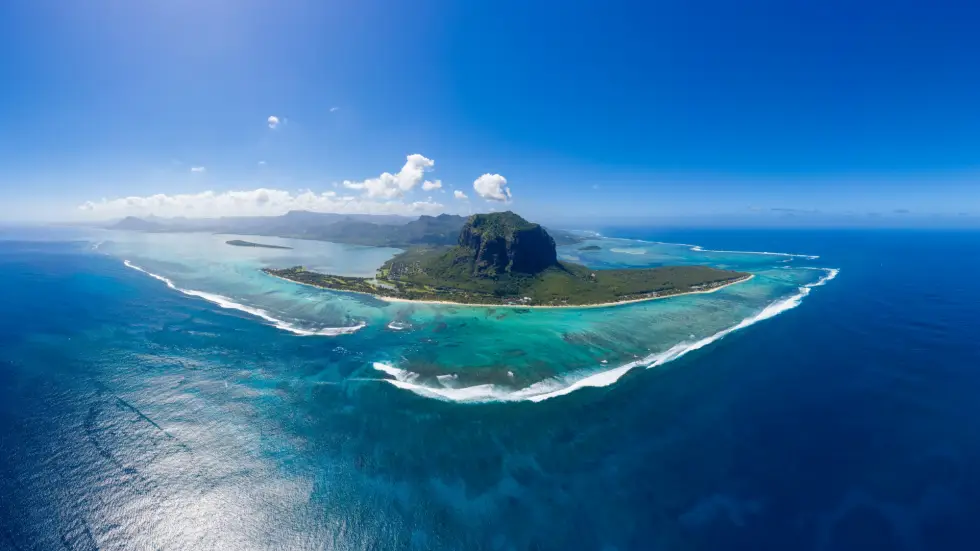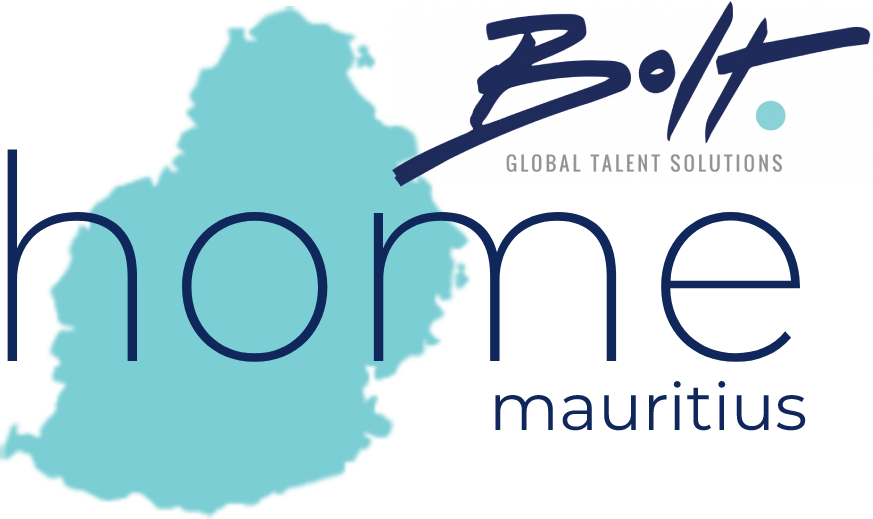Information about Mauritius: Introduction to the History of Mauritius
Would you like to find more information about Mauritius? Mauritius is a beautiful island of opportunity, investment, nature, culture and more!
Where is Mauritius located?
Information frequently searched around Mauritius is location. Mauritius, officially the Republic of Mauritius, is an island in the Indian Ocean about 2,000 kilometres (1,200 mi) off the south-east coast of the African continent. Located north of the tropic of the Capricorn, 20° South Latitude and 57° Longitude East. The island is 67km in length and 46km at its widest point and with an area of 2040 square kilometres.
The country includes the islands of Mauritius, Rodrigues, Agaléga and St. Brandon. The islands of Mauritius and Rodrigues form part of the Mascarene Islands, along with nearby Réunion, a French overseas department.
The capital and largest city, Port Louis, is located on the main island of Mauritius. It is mainly located in the Port Louis District, with a small western part in the Black River District. Port Louis is the country’s economic, cultural and political centre, and most populous city in Mauritius.

What is the history of Mauritius?
900AD – Arab sailors discovered the island and named it Dina Arabi.
1507 – The Portuguese discovered the island and named it Ihla do Cirné (Swan Island). Up to 1598, the Portuguese (as well as pirates from various regions) were the only ones to visit the island, and therefore, it was regarded by many as a Portuguese possession.
1598 – The Dutch took possession of the island and named it Mauritius, in honour of Prince Maurice of Nassau. Over the next 40 years, Mauritius was used as a refreshing station for Dutch East India men on their journeys between Europe and East Asia.
1710 – The Dutch abandoned the island.
1715 – Mauritius was claimed by France, but it wasn’t until 6 years later that French settlers from Reunion made a first attempt at settling the island they named Île de France.
1735 – Governor François Mahé arrived in Mauritius and developed the port, founded Port Louis, and developed farming and agriculture.
1810 – The Battle of Grand Port took place which resulted in the British winning possession of the island.
1814 – France officially ceded Mauritius, including all its dependencies to the United Kingdom (UK) through the Treaty of Paris, and in which Réunion was returned to France. The island was officially attached to the British Empire and regained its name, Mauritius.
The British colony of Mauritius consisted of the main island of Mauritius along with Rodrigues, Agalega, St Brandon, Tromelin and the Chagos Archipelago,
1835 – Slavery was abolished by the British with the emergence of Indian workers as free men but unfortunately worked in very poor conditions.
1906 – The Seychelles became a separate colony from Mauritius.
The sovereignty of Tromelin was disputed between Mauritius and France as some of the islands such as St. Brandon, Chagos, Agalega and Tromelin were not specifically mentioned in the Treaty of Paris.
1965 – Three years prior to the independence of Mauritius. The UK split the Chagos Archipelago from Mauritian territory, and the islands of Aldabra, Farquhar and Desroches from Seychelles, to form the British Indian Ocean Territory (BIOT). The UK forcibly expelled the archipelago’s local population and leased its largest island, Diego Garcia, to the United States.
1968 – On the 12th of March, Mauritius became independent which is a much-celebrated national public holiday.
The national flag of Mauritius, also known as the Four Bands and Les Quatre Bandes (French for “the four bands”), was adopted upon independence, March 12, 1968. It consists of four horizontal bands of equal width, coloured (from top to bottom) red, blue, yellow, and green.
1992 – Mauritius became a Republic.
The UK has restricted access to the Chagos Archipelago; it has been prohibited to casual tourists, the media, and its former inhabitants.The sovereignty of the Chagos is disputed between Mauritius and the UK. In February 2019, in an advisory opinion given by the International Court of Justice on this dispute, the UK was ordered to hand back the Chagos Islands to Mauritius as rapidly as possible, in order to complete the decolonisation of Mauritius.
Information about Mauritius island: An Extended History
Early Explorations
The history of Mauritius begins around 900 AD, when Arab sailors, engaged in trade with people from the East African coast, the Comoros, and Madagascar, first laid eyes on what they called Dina Arobi (Abandoned Island). Since the Arabs were first and foremost traders and a journey as far into the Indian Ocean as the Mascarene Islands was a rather dangerous venture in their small dhows, there was no incentive to establish a settlement on the island.
At the end of the fifteenth century, Europe started to cast its eyes to the East. Attracted by its treasures, of which spices were most important, the Portuguese were the first Europeans to sail around the Cape of Good Hope and explore the Indian Ocean. Vasco da Gama was the first to do so, and on his famous voyage in 1498, he was the first European to learn about the existence of the Mascarene Islands by way of a map shown to him by his Indian pilot.
Mauritius was indicated by its Arab name the very first time it appeared on a European map in 1502, two years after the Portuguese navigator Diogo Dias became the first European to discover the island. The Portuguese did not settle on Mauritius, for the island did not possess any of the riches they were after. They did, however, stop occasionally on the island to obtain food and water before continuing their journeys to the East. They gave the island several names, of which Ilha do Cerne (Swan Island) was preferred in the end. Up to 1598, the Portuguese (as well as pirates from various regions) were the only ones to visit the island, and therefore, it was regarded by many as a Portuguese possession.
Trouble in Paradise – Information Mauritius
On 17 September 1598, five Dutch ships under command of vice-Admiral Wybrandt van Warwijck reached Mauritius, becoming the first Dutch vessels to do so. This event marked the beginning of Dutch involvement with the island. It was claimed as a Dutch possession and given the name Mauritius, after the Dutch Stadholder Maurits van Nassau. Over the next 40 years, Mauritius was used as a refreshing station for Dutch East Indiamen on their journeys between Europe and East Asia.
Rumours of a forthcoming English occupation of Mauritius and a desire to increase ebony exploitation made the Dutch East India Company (VOC) decide to establish a settlement on the island. In 1638, the first settlers arrived at Grand Port Bay, and immediately started constructing a fort, Frederik Hendrik. Settling the island and creating an organised ebony business proved much harder than expected, as cyclones frequently destroyed the settlement, rat- and locust plagues destroyed crops, and African slaves and Batavian convicts, brought over to cut the ebony, often ran away.
Due to all these problems, in 1658, just twenty years after the first attempt at colonisation, the Dutch East India Company’s station at Mauritius was terminated. However, the ever-present English and French competition in the Indian Ocean made the VOC reconsider their decision for abandoning the island, and Mauritius was resettled in 1664. The second group of settlers ran into the same problems as their predecessors.
Within months, they ran out of provisions, and hunters frequently came back from the interior empty-handed. Moreover, several settlers started an illicit trade in ebony with English ships anchoring on Mauritius’ northwestern shores. To make matters worse, slave revolts were becoming a common occurrence, and droughts and epidemics complemented the catastrophes caused by cyclones. The settlers had little respect for their various commanders, and almost every day people were drinking and feasting. Finally, in 1707, it was decided to evacuate the island. Besides several people who fled into the interior, the last settlers left Mauritius in 1710.
The Birth of a Sustainable Colony
In 1715, Mauritius was claimed by France, but it wasn’t until 1721 that French settlers from Reunion made a first attempt at settling the island they named Île de France. During the first years of French rule, a very multiethnic population was created as people from India, Madagascar, Europe, Africa, and China were moved to the island. An attempt was made to develop agriculture, but just as had been the case during Dutch rule, cyclones, droughts, and pests made this quite an unsuccessful endeavour. Slaves, as well as some workers and soldiers, escaped into the forests from which they would frequently launch attacks, soldiers often refused to take orders, and many of those who did stay faithful to their governor were heavy drinkers. Just as had been the case with the Dutch, in the first decade of French rule, the settlement was on the border of collapsing.
The tide quickly turned when Bertrand-François Mahé de La Bourdonnais took up his post as governor of Île de France and Île de Bourbon (Réunion) in 1735. He brought discipline back to the population, and created several businesses for which he often provided the starting capital. Sugar, indigo, cotton, and tobacco plantations were set up, and an adequate labour force imported from India. Port Louis was transformed into a well defended naval base with a state-of-the-art naval workshop, where stores, a market, a theatre, an aqueduct, and a large hospital were built. During the latter part of the 1730‟s, a large number of infrastructures were constructed as well. Slaves were offered training in activities such as shipbuilding and stone cutting. Moreover, they were enrolled as slave hunters and were given a salary. They became very effective in reducing the runaway slave population. La Bourdonnais was replaced in 1746.
The following two decades, agriculture was developed further. Just when Île de France seemed to develop a self-sufficient food production, the Seven Year’s War broke out in 1756. Large numbers of French soldiers on their way to India were called to Mauritius, and quickly the island was threatened with starvation. The war ended in 1763, and four years later, the French government bought Île de France from the East India Company. By this time, 18,777 people, of which over 15,000 were slaves, populated the island. By the end of the eighteenth century, this amount had more than tripled, with slaves constituting over 80% of the island’s population. It is estimated that a total of 160,000 slaves reached Mauritius and Réunion between 1670 and 1810, of which 87% came from various regions in Africa and 13% from India.
In 1787, Port Louis was made into a free port, open to ships of all nations. This caused the number of merchants based in Port Louis to rise from 103 in 1776 to 365 in 1803. During the late eighteenth century, ships from Asia, Africa, Europe, and the Americas brought in various commodities. These included foodstuffs such as rice and wine, textiles, goods required for the maintenance of ships, furniture, ceramics, luxury goods, and most importantly, slaves. It was during this time that the harbour and dockyard were further developed, its equipment modernized, and cleared of silt and shipwrecks.
Wooden houses in Port Louis were replaced by ones made of stone and streets were paved. Barracks and hospitals were constructed for about 2,500 troops, and Port Louis was steadily growing in size. By the early nineteenth century, Ile de France was exporting a large variety of products, including coffee, indigo, tea, textiles, cloves, cinnamon, nutmeg, and ebony. Imports included wine and other liquors, salted food, ceramics, glass, and furniture.
During the American War of Independence, Île de France was again used as a major naval and military base for French campaigns against the British in India. Many soldiers and sailors, on their way to India, called at Port Louis. This gave an enormous boost to the island’s economy. Moreover, corsairs (as well as the French navy) based on Île de France plundered English merchant ships all over the Indian Ocean, which injected considerable sums of money into the island’s economy. Merchants on the island engaged in trade with people from Europe, the Far East, the Middle East, and even the newly formed United States of America.
Due to its strategic position, Great Britain had its eyes set on Île de France. During the first decade of the nineteenth century, British ships occasionally raided the island and set up blockades to cripple trade with the outside world. In November 1810, the British arrived on the island’s northern shores with a fleet of 70 ships carrying 10,000 troops. Over the years British spies had already gathered a lot of intelligence, and by the time of the invasion, the British were in possession of detailed maps of the island. The French, having only 2,000 troops, were greatly outnumbered, and capitulated on 3 December 1810.
The Age of Sugar in Mauritius:
The change of power was remarkably smooth. People went on with their day to day business the day after capitulation. The island’s upper class thought their financial interests would be best served by cooperating with the British, and immediately started to do so. One of the reasons for this was that the British had offered generous terms of capitulation. The island’s laws, customs, religion, private property, free trade, and even the French language were respected. Under British rule, however, the island was once more named Mauritius. Agriculture was modernised by replacing human labour with machines and animals, the road network was improved, and the duty on sugar was reduced. As a result, sugar cane cultivation almost tripled between 1817 and 1827.
In the meantime, Britain saw a growing resistance to slavery, and the Mauritian planters feared they soon had to emancipate their slaves. The price of slaves had skyrocketed as ships of the Royal Navy tried to curtail the slave trade. Slave trade had been abolished in Great Britain’s empire in 1807 but was still practiced illegally. In the meantime, though, the sugar industry was booming and planters were in desperate need of cheap labour.
To face the situation, they started to import indentured Indian and Chinese workers. They worked side by side with the slaves. In 1829, measures were taken to improve slaves’ lives and racial segregation was abolished. Finally, on 12 June 1833, the British Parliament passed the Act that abolished slavery. After much resistance from the slave owners, a Proclamation was signed in January 1835 that introduced the apprentice system in Mauritius. Slaves kept on working as apprentices for a period of four years. After which they were emancipated and the slave owners received compensation. Large numbers of ex-slaves were completely neglected by the authorities and fell victim to extreme poverty. In early 1839, just before all slaves were emancipated, the population of the island consisted of 9,000 whites, about 15,000 free coloureds, and 70,000 slaves. At this time, about 20,000 people were living in Port Louis.
Plantation owners continued to import Indian labourers to replace their freed slaves. Some parts of India were troubled so badly by unemployment, floods, epidemics, famines, and the oppression of certain castes that many people were keen to emigrate. The area under sugar cane in Mauritius rose from 42,000 acres in 1831 to 129,000 in 1861.
The imports of Indians grew steadily, sometimes reaching over 40,000 people per year. By 1861, there were 193,000 Indians on the island compared to 117,000 whites and coloureds. The influx of Indian indentured labour ceased in 1909. One last shipment of 1,500 in 1923 during the sugar boom of the early 1920’s. The trade in Indian workers was, in many respects, not so different from the slave trade. Workers were often recruited with brutal force; on their way to Mauritius, many died of diseases; on the island they were subjected to travel restrictions; and once they made it to the estates, workers were treated badly, including harsh corporal punishment and even imprisonment on estates. But more than the slaves had done before, the Indians resisted the cruel system of which they were part. They frequently revolted, deserted, and went back to India.
During the first five decades of British colonial administration, the number of ships calling at Port Louis increased sharply due to a sugar boom and the construction of several ship repair facilities. In addition, the two railway lines were completed in 1864 and 1865. During the 1860’s, the sugar industry in the Mascarenes began to decline. The number of sugar factories fell from 258 in 1860 to 66 in 1908. Plantations were frequently divided into small plots and sold; by the early twentieth century Indians had acquired almost one third of the land under cultivation. The 1890’s proved to be disastrous: three epidemics, two fires, and one devastating cyclone laid waste to the island and its inhabitants. Moreover, the population had increased to 371,000 in 1901.
A small sugar boom in the 1920’s brought a short-lived period of prosperity to the island, of which the planters benefited the most. In 1936, the working class tried to improve their situation by forming a political party. One year into its existence, it was active in provoking strikes on the sugar estates. After the Second World War, the Colonial Office was contemplating giving Mauritius independence. The population increased sharply following the successful eradication of malaria in the 1950’s with the help of the Colonial Office. It further aided in carrying out public works such as irrigation systems, roads, and a renewal of harbour installations. In 1965, the Colonial Office declared that the island was ready for independence, and on 12 May 1968, after nearly four centuries of European rule, Mauritius finally became a sovereign nation.
Our Trusted Partners













